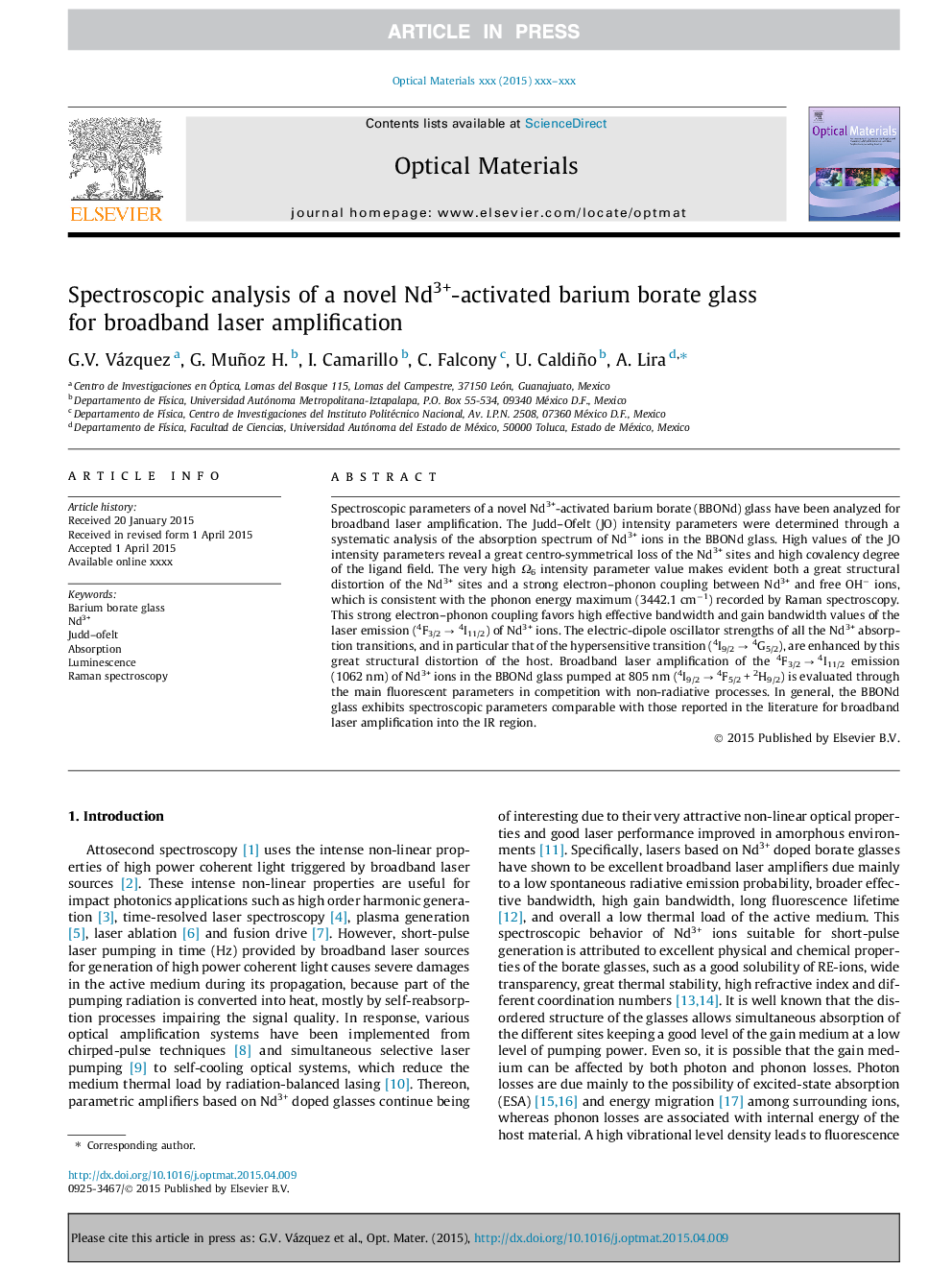| Article ID | Journal | Published Year | Pages | File Type |
|---|---|---|---|---|
| 7908972 | Optical Materials | 2015 | 7 Pages |
Abstract
Spectroscopic parameters of a novel Nd3+-activated barium borate (BBONd) glass have been analyzed for broadband laser amplification. The Judd-Ofelt (JO) intensity parameters were determined through a systematic analysis of the absorption spectrum of Nd3+ ions in the BBONd glass. High values of the JO intensity parameters reveal a great centro-symmetrical loss of the Nd3+ sites and high covalency degree of the ligand field. The very high Ω6 intensity parameter value makes evident both a great structural distortion of the Nd3+ sites and a strong electron-phonon coupling between Nd3+ and free OHâ ions, which is consistent with the phonon energy maximum (3442.1 cmâ1) recorded by Raman spectroscopy. This strong electron-phonon coupling favors high effective bandwidth and gain bandwidth values of the laser emission (4F3/2 â 4I11/2) of Nd3+ ions. The electric-dipole oscillator strengths of all the Nd3+ absorption transitions, and in particular that of the hypersensitive transition (4I9/2 â 4G5/2), are enhanced by this great structural distortion of the host. Broadband laser amplification of the 4F3/2 â 4I11/2 emission (1062 nm) of Nd3+ ions in the BBONd glass pumped at 805 nm (4I9/2 â 4F5/2 + 2H9/2) is evaluated through the main fluorescent parameters in competition with non-radiative processes. In general, the BBONd glass exhibits spectroscopic parameters comparable with those reported in the literature for broadband laser amplification into the IR region.
Related Topics
Physical Sciences and Engineering
Materials Science
Ceramics and Composites
Authors
G.V. Vázquez, G. Muñoz H., I. Camarillo, C. Falcony, U. Caldiño, A. Lira,
